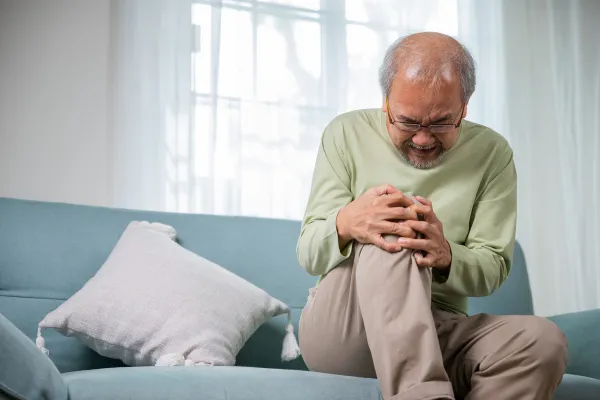
Creaky Knees? What Every Person Should Know About Joint Health
Do your knees sound like a bowl of breakfast cereal when you stand up? That pop, crackle, and groan might seem harmless at first, but they can be early signs that your joints need some TLC. Joint pain is incredibly common—especially as we age—but that doesn’t mean it’s something you have to live with.
In this post, we’ll explore what causes creaky joints, how to keep them healthy, simple strategies to reduce pain and stiffness, and a look at an emerging treatment called SoftWave Therapy.
Why Do Joints Creak, Crack, or Ache?
Creaking or cracking in joints, medically known as crepitus, is often caused by:
Air bubbles in the joint fluid popping
Tendons or ligaments snapping over bones
Cartilage wear, which can expose bone and cause friction
As we age, the cartilage that cushions our joints can wear down, leading to stiffness, inflammation, and pain—commonly known as osteoarthritis.
Common Causes of Joint Issues
Age-related wear and tear
Cartilage naturally breaks down over time, especially in weight‑bearing joints like knees and hips.Inflammatory conditions
Rheumatoid arthritis, gout, or other autoimmune conditions can cause joint inflammation.Injury or overuse
Old injuries or repetitive motions can damage joints, even years later.Sedentary lifestyle
Inactivity weakens muscles that support the joints, causing more strain on the joint itself.Excess weight
Extra pounds put more pressure on knees and hips—every additional pound adds up to four pounds of extra pressure on your knees.
How to Keep Your Joints Healthy
The good news? There are many ways to maintain joint health and reduce pain—without resorting to surgery or constant medication.
1. Keep Moving—But Gently
Low‑impact activities like walking, swimming, or cycling keep joints lubricated and muscles strong. Movement is medicine.
2. Maintain a Healthy Weight
Losing even a small amount of weight can dramatically reduce joint stress, especially in the knees.
3. Strengthen the Muscles Around Your Joints
Exercises that build up your quads, glutes, and core help take pressure off your knees and hips.
4. Mind Your Posture
Good posture protects your joints. Try not to slouch while sitting, and avoid standing for long periods without movement.
5. Use Heat or Cold
A warm compress can ease stiffness, while ice helps reduce swelling after activity.

Foods That Love Your Joints Back
A joint‑friendly diet includes:
Omega‑3 fatty acids (found in fatty fish, flaxseed, and walnuts)
Antioxidant‑rich foods like berries, leafy greens, and colorful vegetables
Vitamin D and calcium to support bone health
Turmeric and ginger, which have natural anti‑inflammatory properties
Avoid processed foods, sugary drinks, and excess red meat, which can promote inflammation.

Could SoftWave Therapy Be Right for You?
SoftWave Tissue Regeneration Therapy (TRT) is a non‑invasive form of extracorporeal shock‑wave therapy (ESWT) that uses broad‑focused acoustic waves to stimulate healing in deeper tissues. By increasing local blood flow, reducing inflammation, and activating your body’s own stem‑cell response, SoftWave can help repair damaged cartilage and soothe painful joints—often in just a few short sessions. The technology is FDA‑cleared for temporary pain relief and improved circulation, and early studies in knee osteoarthritis, tendinopathies, and chronic soft‑tissue injuries show promising reductions in pain and improvements in function.
Why patients like it
No needles, drugs, or downtime
Sessions take about 10–15 minutes
You can walk out and resume normal activity the same day
Most people notice relief after 1‑3 treatments
Smart next steps
If you’re curious, look for a licensed provider who offers SoftWave ESWT and ask:
Are you certified to use SoftWave equipment?
How many treatments do you typically recommend for knee or hip pain?
Is SoftWave appropriate for my specific diagnosis?
As with any therapy, results vary, but SoftWave has become a favorite among active seniors who want non‑surgical relief.

When to See a Doctor
You should talk to a healthcare provider if you experience:
Persistent or worsening pain
Swelling or warmth around the joint
Joints that feel unstable or lock up
Difficulty with daily tasks like walking, bending, or getting out of a chair
Early intervention can slow progression and improve your quality of life.
Final Thoughts: Don’t Ignore the Creaks
Joint pain isn’t just “part of getting older”—it’s your body asking for support. With the right lifestyle changes, gentle exercise, and a few smart habits (including emerging therapies like SoftWave), you can stay mobile and independent well into your golden years.
So the next time your knees creak, don’t just wince and move on. Listen—and take action.

References
Felson DT. Osteoarthritis as a disease of mechanics. Osteoarthritis Cartilage. 2013;21(1):10-15.
National Institute on Aging. Joint Pain and Aging. https://www.nia.nih.gov/health/joint-pain-and-aging
SoftWaveTRT. Clinical research and studies. https://softwavetrt.com/clinical-research/
Mayo Clinic. Joint pain: Causes. https://www.mayoclinic.org/symptoms/joint-pain/basics/causes/sym-20050668
Harvard Health Publishing. Foods that fight inflammation. https://www.health.harvard.edu/staying-healthy/foods-that-fight-inflammation
